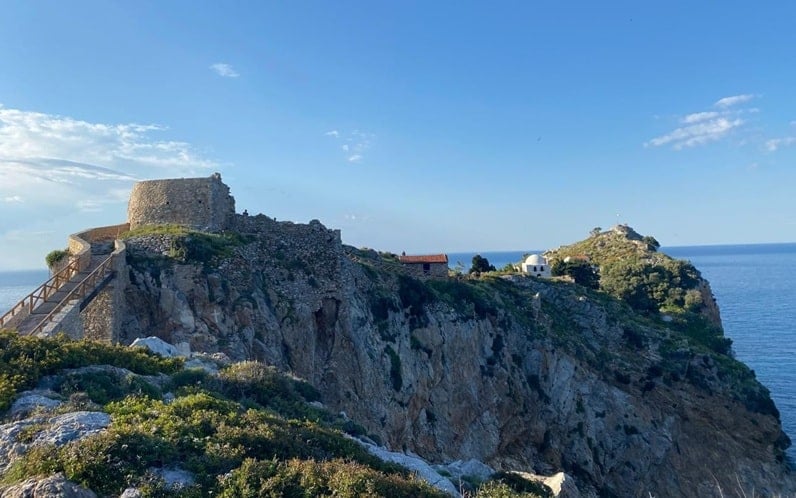

The medieval castle of Greece’s Skiathos, known locally as the “Kastro”, has officially reopened to the public following extensive restoration works.
The project, long awaited by residents and visitors alike, encompassed the construction of a new bridge, the restoration of the castle gate, and the reconstruction of pathways for improved accessibility.
This reopening is part of a broader initiative by the Skiathos Municipality to rebrand the island as a year-round cultural destination, blending history, sports, gastronomy, and live events to attract a more diverse audience beyond its well-known summer beaches.
“The Kastro is not just a historic site. It’s a sacred symbol of the island, closely tied to the life and works of Alexandros Papadiamantis, said Mayor Thodoris Tzoumas, referring to the beloved Greek author who featured the castle in many of his short stories.
The Kastro, a 14th-century monument and a symbol of Skiathos, holds a pivotal role as a social hub, a place of worship, and a central element in the island’s identity. For years, its restoration has been a paramount demand of the island community.
It served as the island’s capital until 1829. Overlooking a small cove, the fortified site was once home to hundreds of residents seeking protection from pirate raids.
The extensive restoration efforts included shaping the access paths to the castle gate, installing a new gate and reconstructing the arched lintel, meticulous masonry work to stabilize the southern wall, and rebuilding the bridge on fortified stone foundations. Significant efforts were also made to secure the rocky slopes, ensuring safety and preservation across the castle grounds.
Inside the castle, the Ephorate of Antiquities of Magnesia conducted thorough cleaning and restoration of paved paths, as well as the historic churches and the mosque within its walls. These efforts not only aimed to preserve these structures but also to revive them for worship and cultural appreciation, particularly for future generations of the island.
Minister Lina Mendoni expressed profound joy and pride in delivering the fully restored and accessible Skiathos Castle, emphasizing its dual significance as a cultural landmark and a catalyst for local development. The project, funded through European programs and supported by local authorities, reflects a harmonious blend of historical preservation and contemporary accessibility.
The site’s history is largely the tale of geostrategic competition between the Ottoman Empire and Venice in the late Medieval period. The castle was under the control of the Byzantine Empire until the fall of Constantinople in 1453. After falling under Venetian rule, local resentment led to a rebellion in 1518.
However, an Ottoman siege in 1538 ended Venetian governance, with Ottomans later repairing the castle in 1619. Venetians raided in 1655, and in 1660, Francesco Morosini recaptured it, subjecting locals to harsh occupation.
Later, the castle again fell to the Ottomans. Greek rebels attacked during the War of Independence, capturing and plundering the castle in 1826. As Skiathos joined the Greek state in 1829, the castle was abandoned, and the ancient town’s site was reclaimed.
Today, while only remnants of its medieval splendor remain, including the gate and northern walls, the restored Skiathos Castle stands as a beacon of the island’s rich history and enduring spirit, seamlessly connecting its past with its vibrant present.
